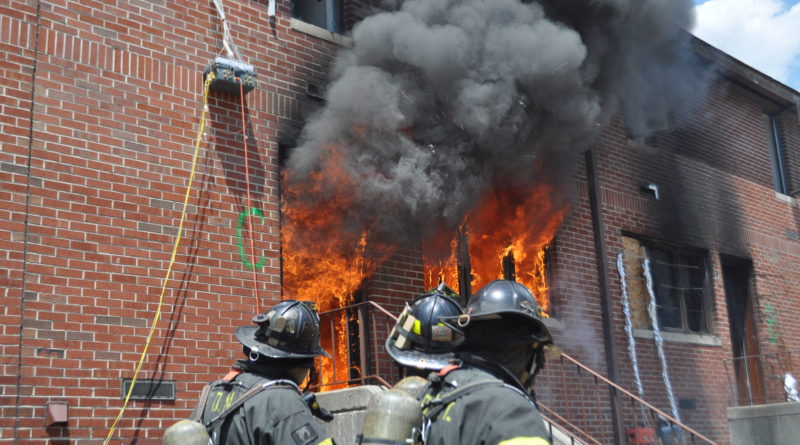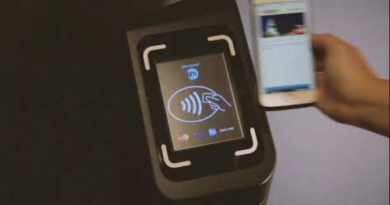9/11 20 Years Later: FDNY Rolls Out New Tech
September 11, 2021, marks the twentieth anniversary of the 9/11 terror attacks. Firefighters were the first responders on the scene that day, trying to save as many lives as they could. But, unfortunately, they didn’t have all the technology they needed.
Research on firefighting techniques has led to the development of new strategies, technology, and ways of thinking for the New York City Fire Department (FDNY).
“Opening up skylights and windows without water allows fires to get bigger. Fires in high-rise buildings are even more challenging. Research has shown that controlling the air supply to a fire by covering a vented window with a wind control device, such as a large fire-resistant blanket, or using nozzles that reach between floors to knock down the fire, enables firefighters to quickly access the fire floor. Then they can search for victims and extinguish the fire. Getting better information to firefighters when they need it involves employing technology like drones, thermal imaging cameras, gas sensors, and social media,” said Daniel Madrzykowski, director of research at UL Fire Safety Research Institute.
UL Fire Safety Research Institute (FSRI) is the fire research arm of Underwriters Laboratories, a global independent science safety company. The Institute partners with FDNY, the Governors Island Preservation and Education Corporation, and the National Institute of Standards and Technology, a physical sciences laboratory and a non-regulatory agency of the U.S. Department of Commerce. Together the entities conduct live burn experiments on Governors Island. The information that the FSRI gathers helps FDNY and other fire departments across the U.S. engage in operations safely and efficiently.
Madrzykowski said FDNY has learned to challenge a long-standing practice, getting firefighters to the roof to open the skylight.
“For over a hundred years, FDNY used this tactic to let the smoke out of tenement buildings. However, the same tactics were being applied in high-rise buildings. These have a very different ventilation flow than a tenement with an open central stair. The problem is the sudden burst of oxygen from opening up the stairway allows a fire to get bigger and flow toward the firefighters trying to get to the apartment that is on fire. Wind can also be a very bad form of uncoordinated ventilation. It leads to unpredictability on a scene,” said Madrzykowski.
The new, safer approach involves deploying wind control devices over the open window of the apartment on fire or using special nozzles to flow water from the floor below into the window of the apartment above, said Madrzykowski.
“These tactics deprive the fire of oxygen and provide cooling. They allow firefighters into an area without allowing the size and intensity of the fire to increase,” said Madrzykowski.
The primary reason firefighters must try out new ideas is that modern homes and apartments are full of furniture and clothes made with synthetic materials.
“Products like the polyester microfiber and polyurethane foam in a modern sofa are synthesized from crude oil. When they burn, they emit an extremely high heat. They melt, drip, and give off toxic smoke,” said Madrzykowski.
Madrzykowski said scorching fires could melt firefighters’ facepieces and burn through their gear.
“The gear is not fireproof. It’s designed to take about 500°F. A fire fueled by synthetic materials can easily get to 1,500 or 2,000°F. That’s why we are helping firefighters cut off the flow of oxygen from the start,” said Madrzykowski.
Madrzykowski added coordinating ventilation and suppression tactics in high-rise buildings requires advanced devices.
The machinery includes radios with high-performance repeaters, components that receive the radio signal on one frequency and simultaneously transmit the same signal on another frequency; infrared cameras; and drones to see the scene from different angles.
“Social media apps, especially those that broadcast live, and citizen apps for fire buffs are helpful too. Anything that collects data in a unique way and presents it to FDNY companies helps them deal with a challenging scene,” said Madrzykowski.
Madrzykowski said a recent challenge for FDNY firefighters is fighting fires caused by lithium-ion battery packs. These battery packs are present in a wide variety of vehicles powered by electricity, including hoverboards, e-bikes, e-scooters and certain electric cars, as well as laptops and power tools.
“A device can catch fire when you use the wrong charger or if a damaged battery is being charged. Lithium ion-battery-powered devices burn very hot. The one way to handle fires in smaller devices is to drown the battery in the bathtub,” said Madrzykowski.
FSRI and FDNY are now developing training that involves wrapping portable devices in a fire-resistant blanket and submerging them in water. In some cases, the lithium-ion batteries can be hard to extinguish or have the potential for re-igniting.
“Submerging the batteries in water…is preferable to having the firefighters…try to remove (burning) batteries out of a high-rise apartment via an elevator or stairway,” said Madrzykowski.
Madrzykowski said the close relationship between FDNY and FSRI informs UL as well.
Every year, FSRI staff observe FDNY’s large-scale training called “the mother of all drills.” The annual event occurs at FDNY’s Training Academy on Randall’s Island in Astoria.
“At the in-service training, several engine companies and ladder companies coordinate to better understand how to use the new tools on the ground. When we watch companies work together, we get a better idea of how they communicate. That’s how we start to understand how to make different technologies or techniques part of an overall strategy,” said Madrzykowski.
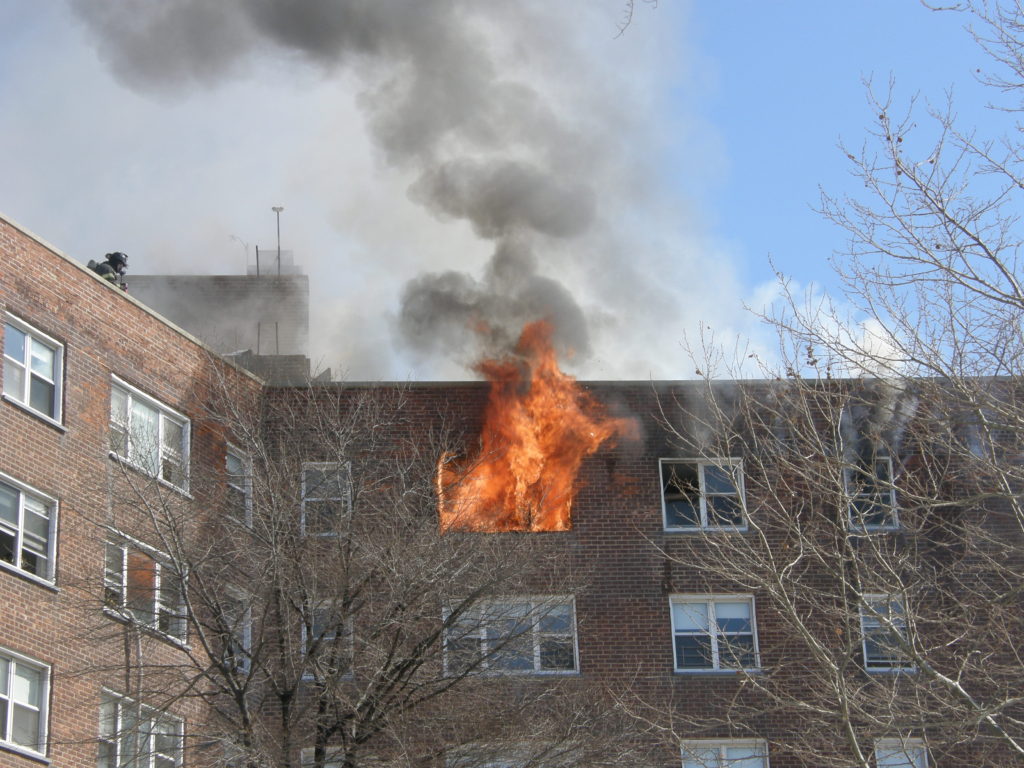
FDNY firefighters train in a drill involving a fire in a high-rise building on Governors Island. Photo credit: UL Fire Safety Research Institute 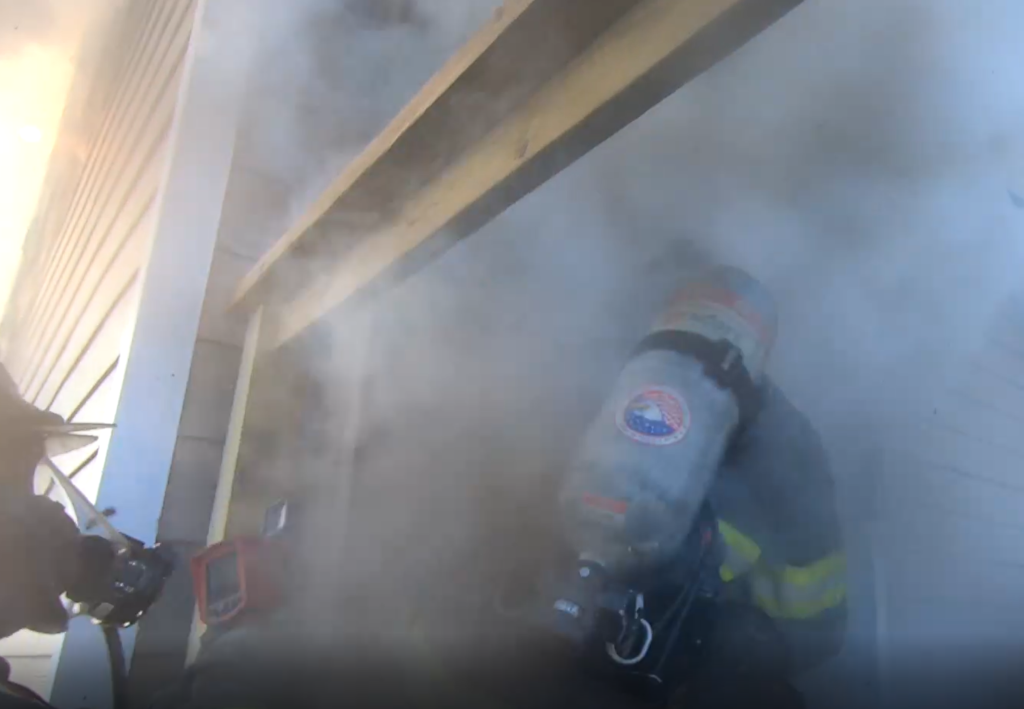
A firefighter uses a thermal imager from the exterior of a fire building to guide suppression. Photo credit: UL Fire Safety Research Institute 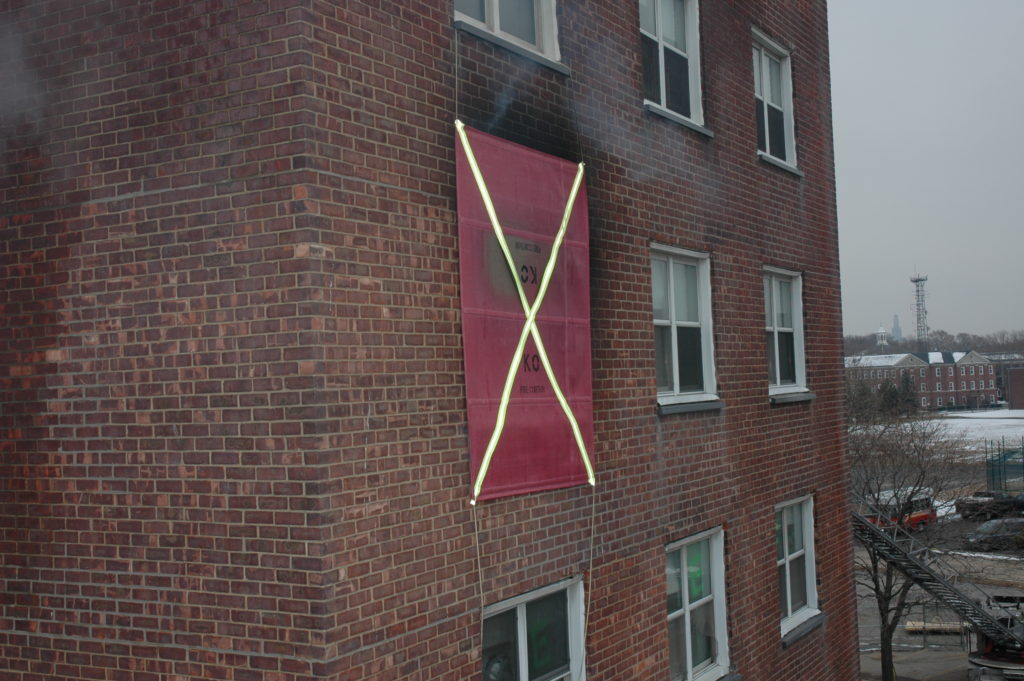
FDNY firefighters use a large fire-resistant blanket as a wind control device at a training event on Governors Island. Photo credit: UL Fire Safety Research Institute 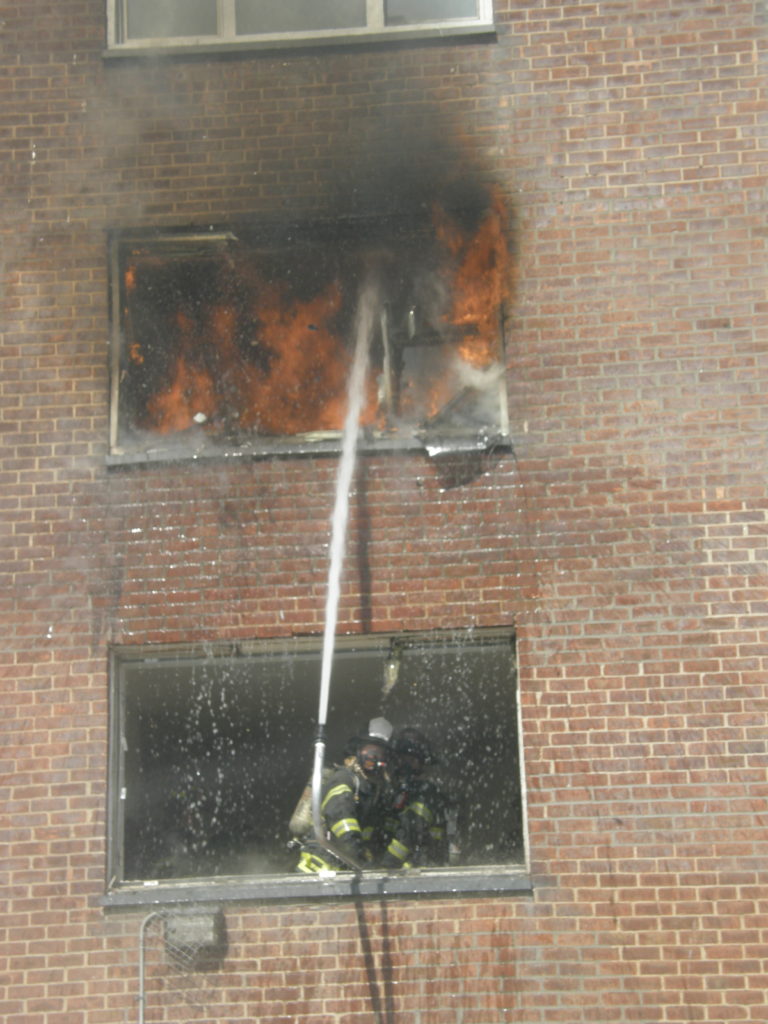
FDNY firefighters use a nozzle to combat a fire in a high-rise building in a training event on Governors Island. Photo credit: UL Fire Safety Research Institute (P2) 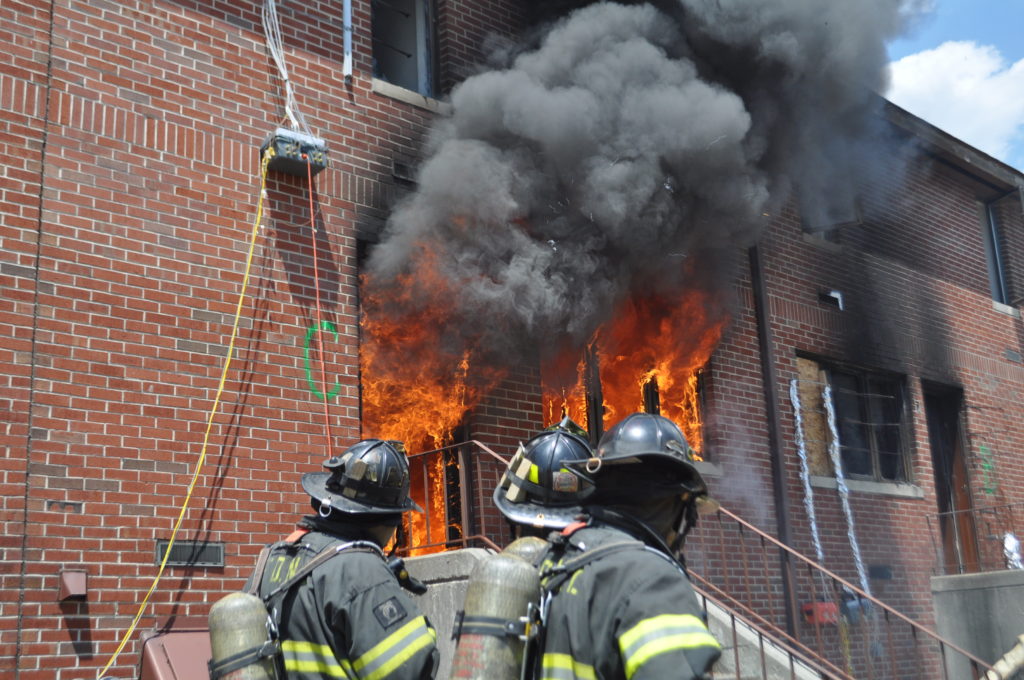
FDNY firefighters fight a rowhouse fire at a training event on Governors Island. Photo credit: UL Fire Safety Research Institute 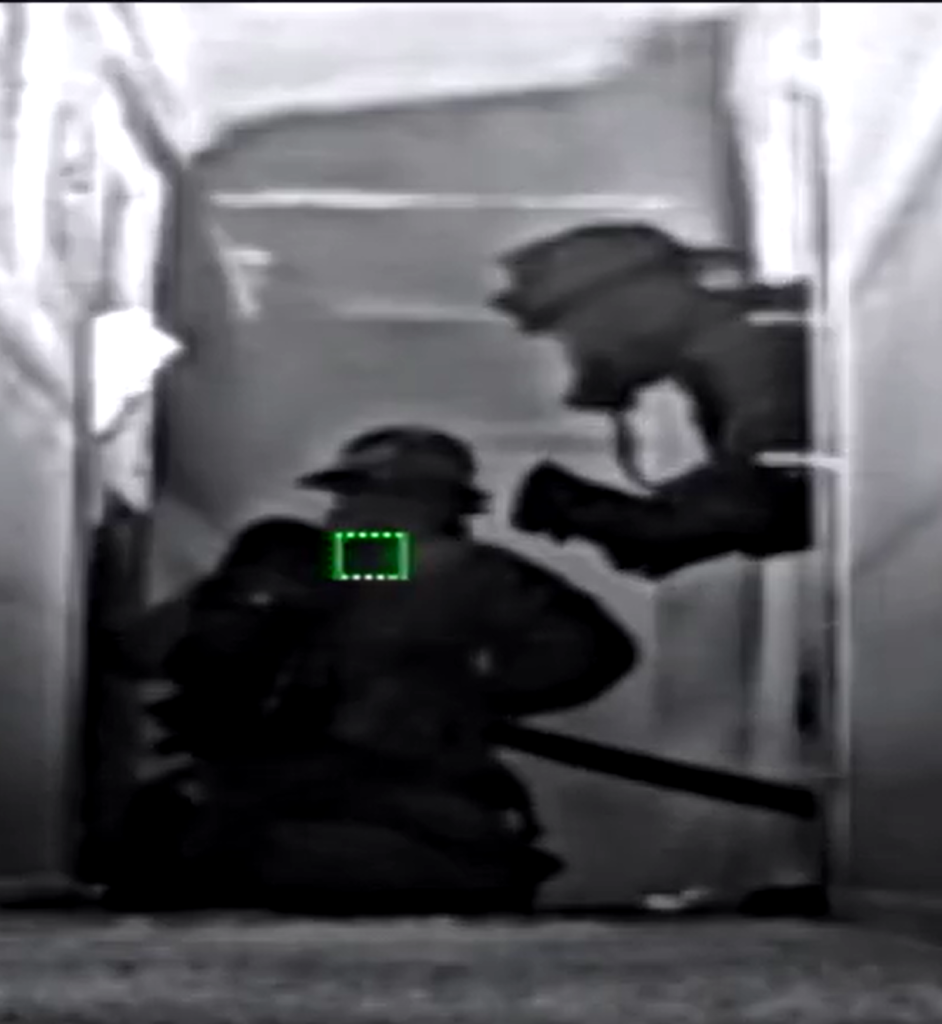
An image from a thermal imager shows a firefighter with a second thermal imager in a smoke-filled hallway. Photo credit: UL Fire Safety Research Institute
For more New York City Technology news and culture, follow us on Instagram, Twitter @NYCWired, and sign up for our Newsletter below.

